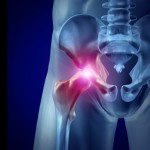Osteoporosis: Bone Scans and T-Scores

Recently I began treating a female patient whose ovaries had begun to shut down prematurely. Her condition was not discovered for many years and, as a result, today she has been diagnosed with osteoporosis. Sadly, she’s only in her thirties.
For most adults, osteoporosis is not something to be concerned about until much later in life. The best way NOT to worry, is to get a bone scan done in a timely fashion. This test is first recommended for women who are 65, for men at the age of 70, or oftentimes, for anyone who has broken a bone after the age of 50. Future, follow up scans will depend upon your initial findings.
A bone scan will score your bones’ (calcium) density using a DXA (dual-energy X-ray absorptiometry) machine. This scan is a quick, inexpensive test, done fully clothed, which uses only a minimal amount of radiation. The results are given in the form of a T-score. Basically, the lower your score, the weaker your bones are.
- A T-score of -1.0 or above = normal bone density.
- A T-score between -1.0 and -2.5 = low bone density, or osteopenia.
- A T-score of -2.5 or lower = osteoporosis.
So, what should you do if you’re discovered to have weakening bones? Two words: WEIGHT- BEARING EXERCISES. Examples are walking, jogging, dancing, skiing, stairclimbing, etc. Not included/effective are non-weightbearing exercises such as swimming and cycling. Bones build strength, just as your muscles do, when they must “hold up” under resistance. Eating a bone-healthy diet—dairy foods, green, leafy vegetables, nuts, tofu, sardines—is always a good idea, too.
Additionally, should your bone loss be extensive, there are prescription medications which can improve your bone’s strength and guard against further bone loss. These meds, as with many, have pros and cons which need to be discussed with your physician.
Be a good steward of your bones; your skeleton is a terrible thing to let waste away.